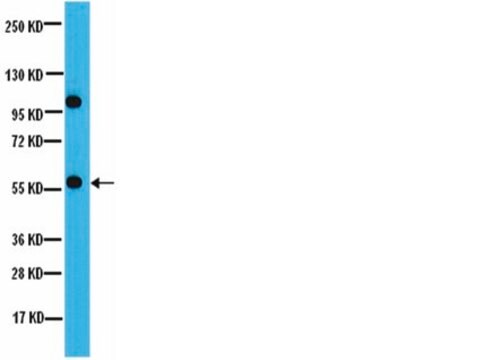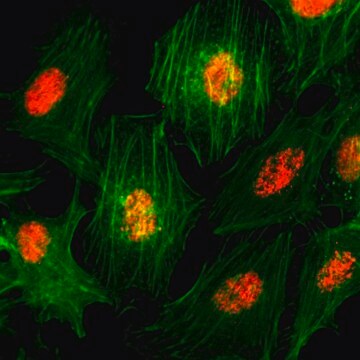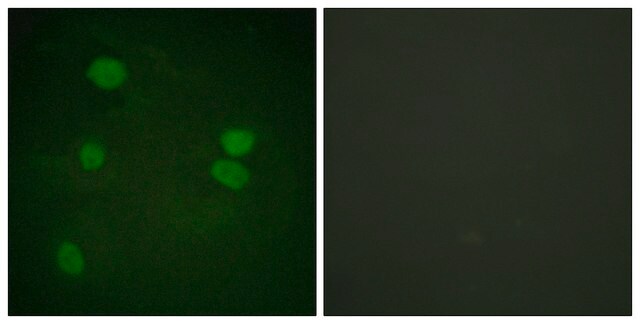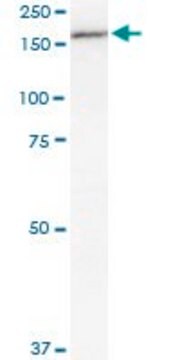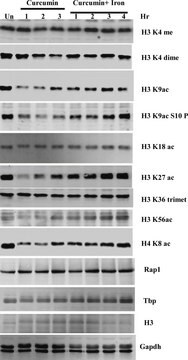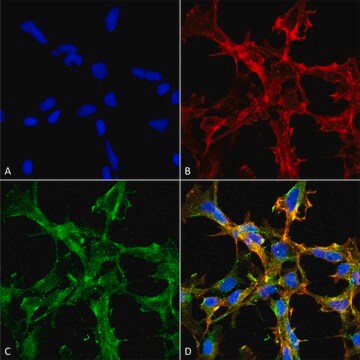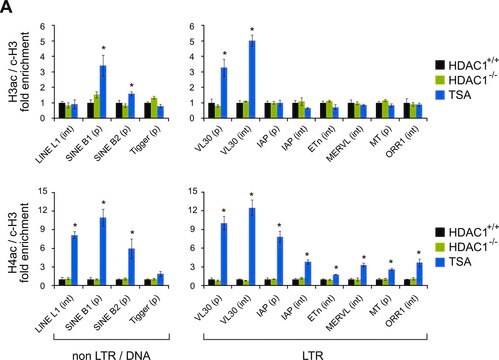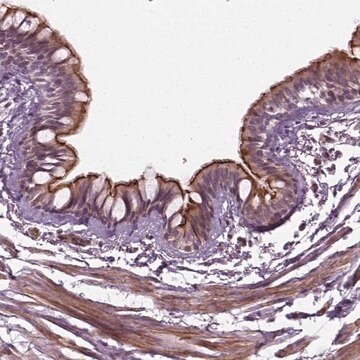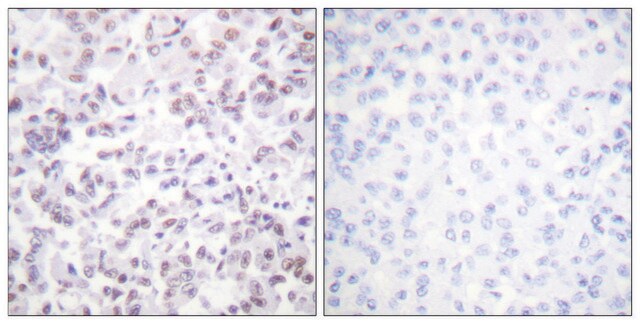Descrizione generale
Histone H4 (UniProt P62805; also known as H4 histone family member A, Histone 1 H4a) is encoded by the HIST1H4A (also known as H4/A, H4FA) gene (Gene ID 8359) in human. Histone H4 is one of the main histone proteins that contribute to the chromatin structure in both prokaryotic and eukaryotic cells. Histone H4 can undergo several different types of epigenetic modifications that influence cellular processes, including methylation and acetylation on lysine and arginine residues, phosphorylation on serine and threonine residues, as well as conversion Arg3 to a citrulline residue by the peptidylarginine deiminase PAD4-catalyzed deimination reaction, also known as citrullination). Histone H4 Arg3 citrullination (H4Cit3) weakens histone-DNA interaction as a result of a conformational change and a reduced positive charge at the histone H4 N terminal end. Bacterial infection is known to stimulate H4Cit3 in neutrophils, forming highly decondensed extracellular chromatin structure NET (neutrophil extracellular trap) that could capture and kill microorganisms. On the other hand, citrullinated proteins are recognized as non-self proteins and subsequently activate immune systems. A functional haplotype of the PADI4 gene has been shown to be associated with the pathogenesis of rheumatoid arthritis through induction of the antigenicity of proteins. H4Cit3 is induced in response to DNA damage through the p53-PADI4 pathway, resulting in upregulated H4Cit3 immunoreactivity localized around fragmented nuclei in apoptotic cells. In addition, H4Cit3 level is negatively correlated with p53 protein expression and tumour size in non-small cell lung cancer (NSCLC) tissues, indicating a crucial role of H4Cit3 in carcinogenesis.
Specificità
Prevista reattività con molte diverse specie data l′omologia di sequenza del 100%.
This rabbit polyclonal antibody detected PAD4-catalyzed Arg3 citrullination of recombinant histone H4 and H2A, as well as calcium ionophore-induced histone H4 Arg3 citrullination (H4Cit3) in HL-60 cells. Cellular PAD4 (peptidyl arginine deiminase 4) knockdown greatly diminished ionophor-induced H4Cit3, while antibody blocking with the immunogen peptide prevented target band detection (Tanikawa, C., et al. (2012). Nat. Commun. 3:676; Fischer, A.J., et al. (2004). Science. 306(5694):279-283).
Immunogeno
Epitopo: N-terminale
KLH-conjugated, synthetic peptide corresponding to amino acids 1-10 (SG[cit]GKGGKGL-C) of human histone H4 (Met1 removed), where [cit] denotes citrullinated Arg3. A C-terminal cysteine was added for conjugation purposes.
Applicazioni
Anti-Histone H4 (Citrulline 3) Antibody, Cat. No. 07-596, is a highly specific rabbit polyclonal antibody that targets histone H4 citrullination (H4Cit3) and has been tested in Chromatin Immunoprecipitation (ChIP), Immunocytochemistry, Immunohistochemistry, and Western Blotting.
Categoria di ricerca
Epigenetica & funzione nucleare
Sotto categoria di ricerca
Istoni
Qualità
Valutata mediante Western blotting su lisato di cellule HL-60.
Saggio di Western blotting: µ
Descrizione del bersaglio
Circa 12 kDa, osservato. 11.24/11.37 kDa (H4 with/without Met1 removal) calculated. In alcuni lisati possono essere osservate bande non caratterizzate.
Stato fisico
Anticorpo policlonale di coniglio purificato, in tampone contenente Tris-glicina 0,1 M, pH 7,4, NaCl 150 mM e azoturo di sodio 0,05%.
Purificato per affinità.
Stoccaggio e stabilità
Stabile per 1 anno dalla data di ricezione a 2-8 °C.
Altre note
Concentrazione: fare riferimento alla scheda tecnica specifica del lotto.
Note legali
UPSTATE is a registered trademark of Merck KGaA, Darmstadt, Germany
Esclusione di responsabilità
Salvo diversa indicazione nel nostro catalogo o in altra documentazione fornita dall′azienda insieme al prodotto, i nostri prodotti sono destinati esclusivamente a scopi di ricerca e non devono essere utilizzati per altre finalità, inclusi a titolo esemplificativo ma non esaustivo, fini commerciali non autorizzati, applicazioni diagnostiche in vitro, usi terapeutici ex vivo o in vivo o qualsiasi altro tipo di assunzione o applicazione rivolta agli esseri umani o agli animali.

